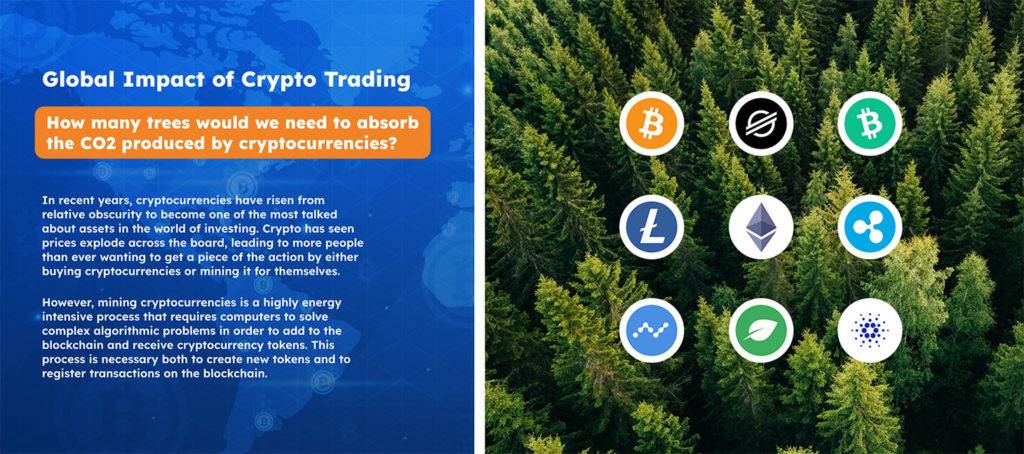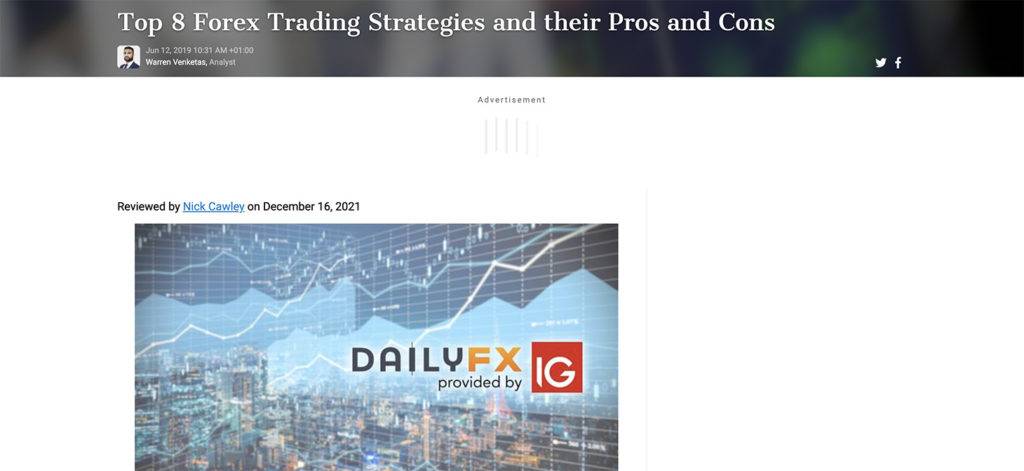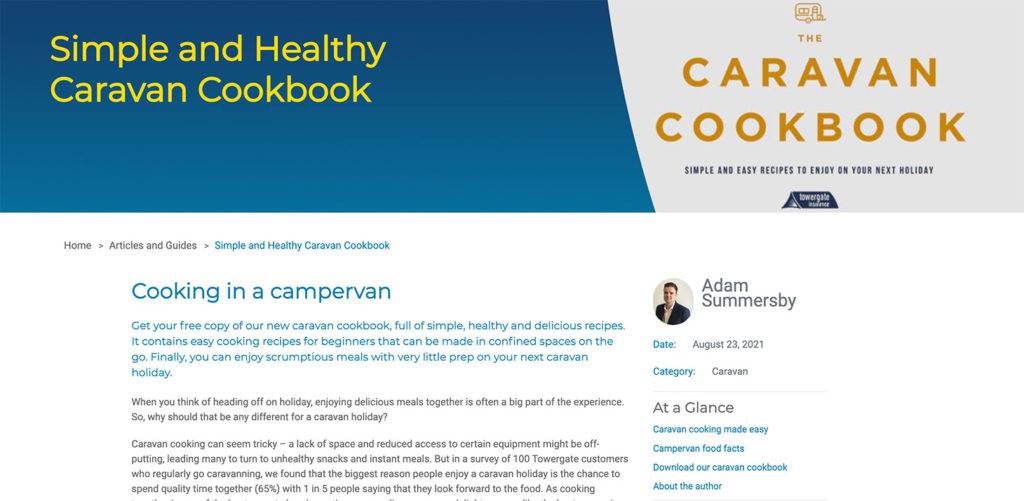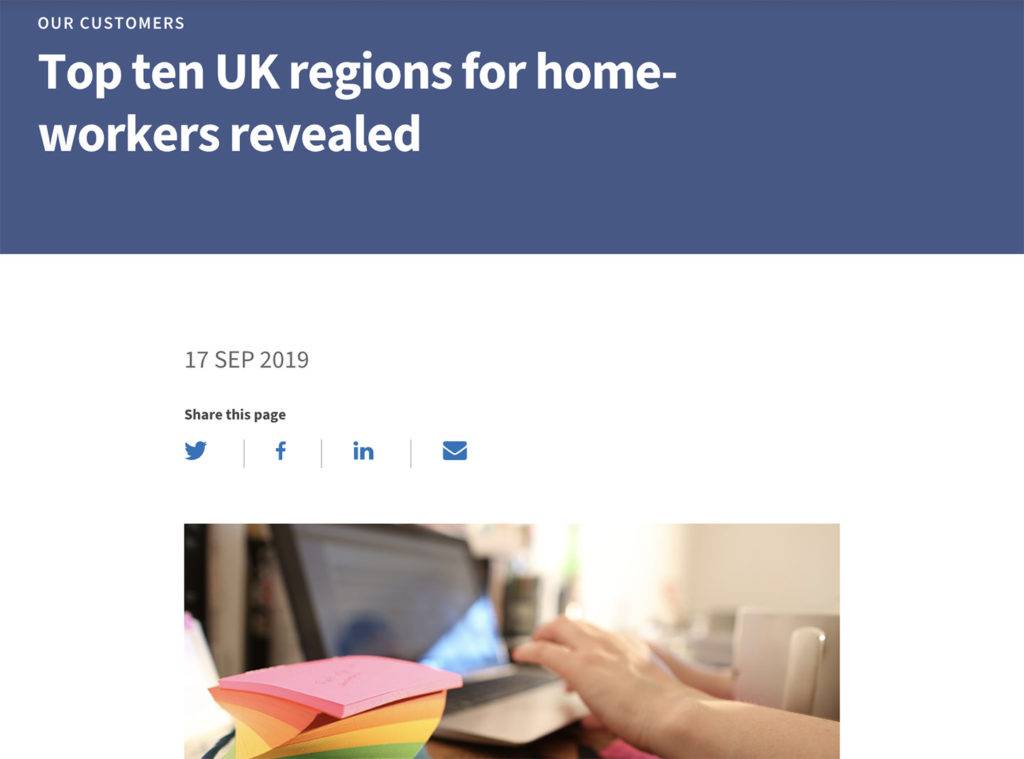Digital PR will be used to provide value beyond price, or product functionality
Digital PR has the power to be one of the reasons consumers choose your brand, rather than solely being used as a tool for building links. It can build connections and confidence between you and your target audience. This can be done by finding out what they care about in relation to your product and using it as the basis of your campaigns.
A really great example of this is a report by Global Suggests that looks at the global impact of trading, in particular trading cryptocurrencies. There’s a cost on the environment by doing this due to the energy it requires, so Global Suggests uncovered how much that cost was and highlighted the cryptocurrencies that were best and worst in terms of their carbon footprint.
This is helpful to anyone interested in trading cryptocurrencies where environmental impact is part of their decision-making. Through a campaign like this, the brand is able to build authority in these areas, and the traffic it gains is therefore highly relevant and more likely to convert once on site. This is because they’ve already gained something from interacting with the brand without having to part with a penny.

Digital PR campaigns will align more closely with onsite content objectives
When it comes to YMYL (Your Money Your Life) industries, of which financial services is one, there is lots to consider when creating content to ensure it is reliable and easy to be assessed as such by users and search engines alike.
Our analysis showed that not enough Digital PR campaigns utilise a clear expert on the topic they’re discussing or give users a clear onward journey to more relevant reading. For money transfer and insurance comparison sites, none of the campaigns did. But this is a must, and it’s factors like this onsite content teams help with.
This is one part of it, but we believe that more and more Digital PR campaigns will become part of a site’s wider content strategy. Aimed at bringing relevant prospective customers into the site’s ecosystem, and giving them clear onward journeys to finding more valuable information, or products that serve their needs.
This example from Daily FX is great, it’s built over 500 links from relevant and authoritative sites, and includes lots of internal links to other relevant content on its own site. It’s authored by an expert, includes clear sources and the information and content are extremely useful.

Relevance, relevance…..relevance
This isn’t something new, relevance has always been a key factor of link building.
But we still see many campaigns that have little relevance to a brand, its product offering or target audience just because they will build links. According to our research, some areas within finance are more likely to produce campaigns with lower relevance – these are personal loans and insurance comparison sites. On the flipside, trading companies produce the most relevant campaigns.
When it comes to links, Google is trying to create a picture of what your brand does based on the type of links you have and what content the links sit in. So, the more relevant links you have the better right? Yes.
Campaigns that cover relevant topics will not only help to build you relevant links, but they’ll help to capture relevant traffic too. Even if the links are no-follow (passing less SEO value), the traffic that follows the link will be relevant. A recent campaign we did for Towergate is an example of doing something creative that can capture links while remaining relevant. A lot of caravanners become frustrated with the lack of space and flexibility to make nice meals while on their travels, so to help, we created The Caravan Cookbook. It contained easy, simple recipes from breakfast to sweet treats and secured links across relevant travel and niche caravan sites. Read more about this in our case study on the piece, here.

Our SEO Technical Lead, Will, talks about methods for securing relevant links without campaigns in his recent article – definitely worth a read.
We might see the death of Digital PR campaign ranking formats
If done right, there’s no reason for rankings or indexes to die a death.
However, more and more we’re seeing examples of Digital PR campaigns using rankings to give a broad range of appeal and opportunity to drive links that have little relevance.
In fact, our research showed that rankings were the format that had the least relevancy to a brand or product.
While they’re great at providing headlines, they’re also the format that offers the least value to prospective customers, giving minimal opportunity to keep them onsite and convert.
If these formats fail to evolve, then they could see the same fate as the infographic – a format used way back when to drive links to brands. If they do evolve however, and are used alongside other content such as expert advice, or a tool etc. then they may remain fit to serve their purpose.
A good example of this is a campaign by Aviva targeted at one of its insurance products. The campaign ranks the top UK regions for home working combined with advice on home set-up, including checking that you have the right insurance for home working depending on your profession.
While the campaign itself doesn’t look particularly engaging visually, it serves a valuable purpose to those who may be interested in Aviva’s relevant insurance product.

We will see tougher penalties on Digital PR campaigns that miss the mark
I mentioned this in part one, but the financial service industry is one that’s highly competitive and has a lot more rules when it comes to the kind of content it can put out there.
Because of this, it’s a space that’s constantly changing. This offers a real opportunity for brands to evolve their link-building strategy to gain a competitive edge.
Over the next few years, or even as soon as this year, I’d expect SERPs to become much more strict with the value they place on content being created and the links being built in this space. Those doing it well will likely be given valuable signals as a result of providing the most helpful and relevant advice, while those only producing content with link building in mind, may end up being reprimanded.
I’d love to see more financial service brands spending and investing wisely when it comes to their digital PR tactics. Whether this be steps towards not having link building as a siloed stream of work, or starting to create more content that’s truly valuable to the end-user.
It’s an area with so much potential if approached in the right way, with the right objectives and the right mindset. Those that are truly trying to help people will have the most to gain.
Please do get in touch if you’d like to discuss any of the points I’ve covered in the piece.
Article for further reading from our blog:
https://builtvisible.com/pages-desirable-for-link-building/
https://builtvisible.com/link-building-ecommerce-website/
https://builtvisible.com/seo-for-financial-services-off-page-seo/
https://builtvisible.com/are-you-paying-for-links-with-your-principles/
https://builtvisible.com/no-content-no-problem-creative-link-building-within-a-tight-brief/
